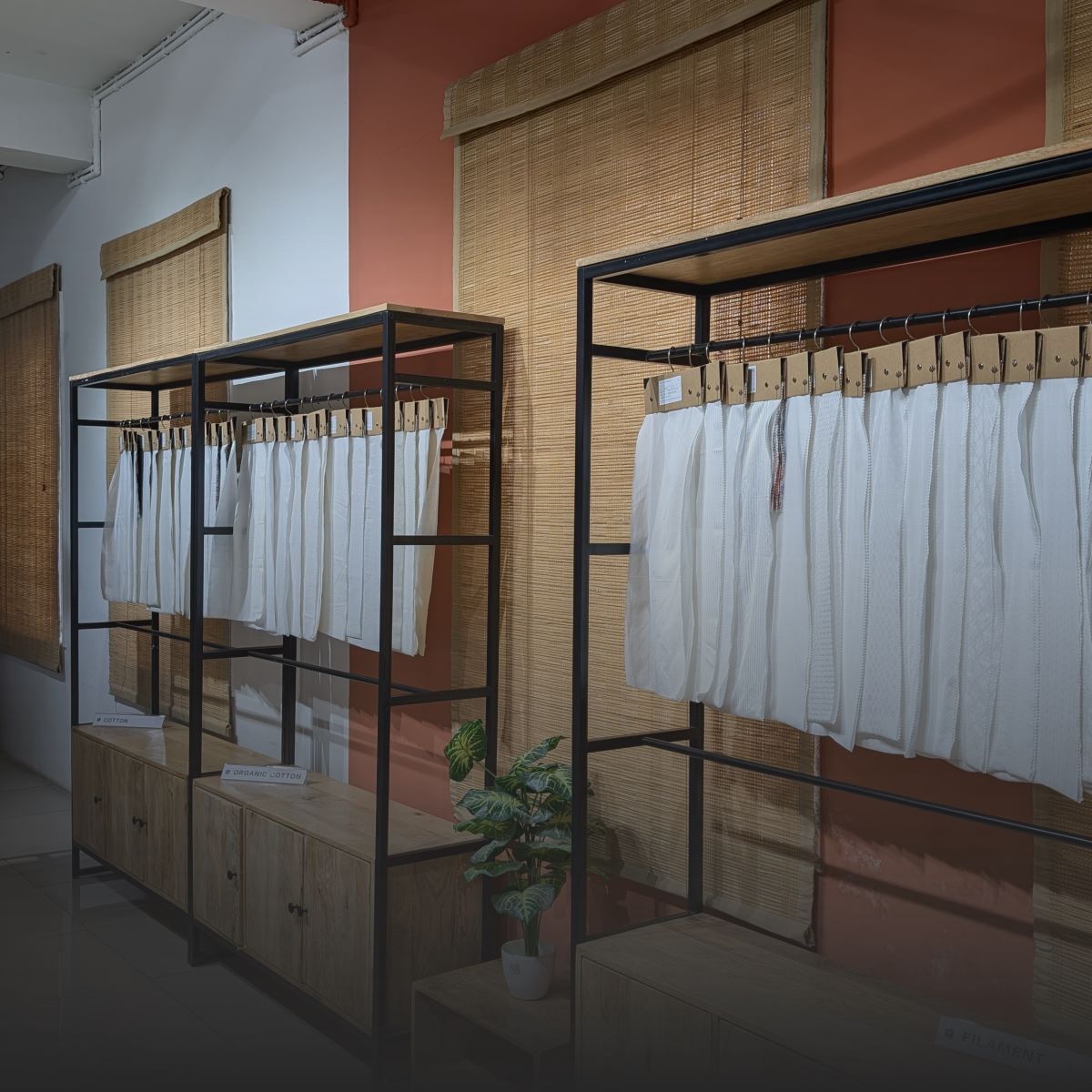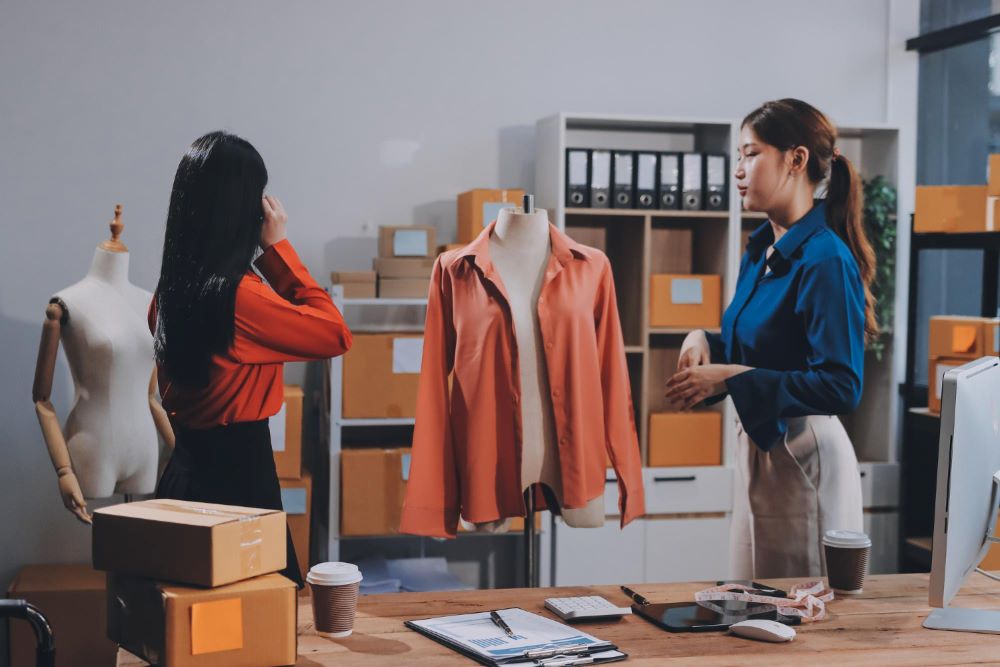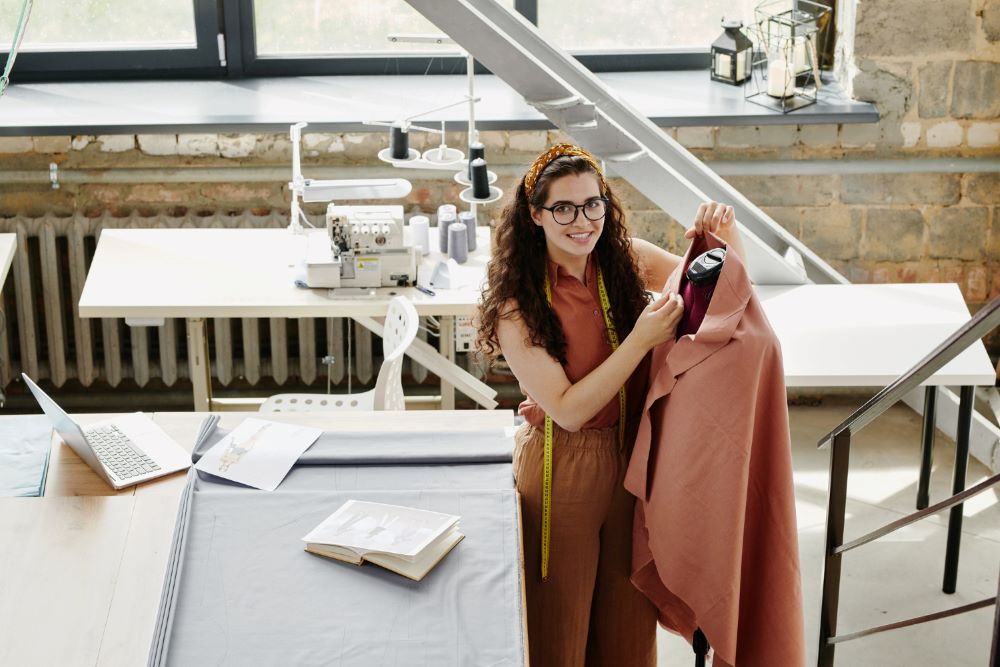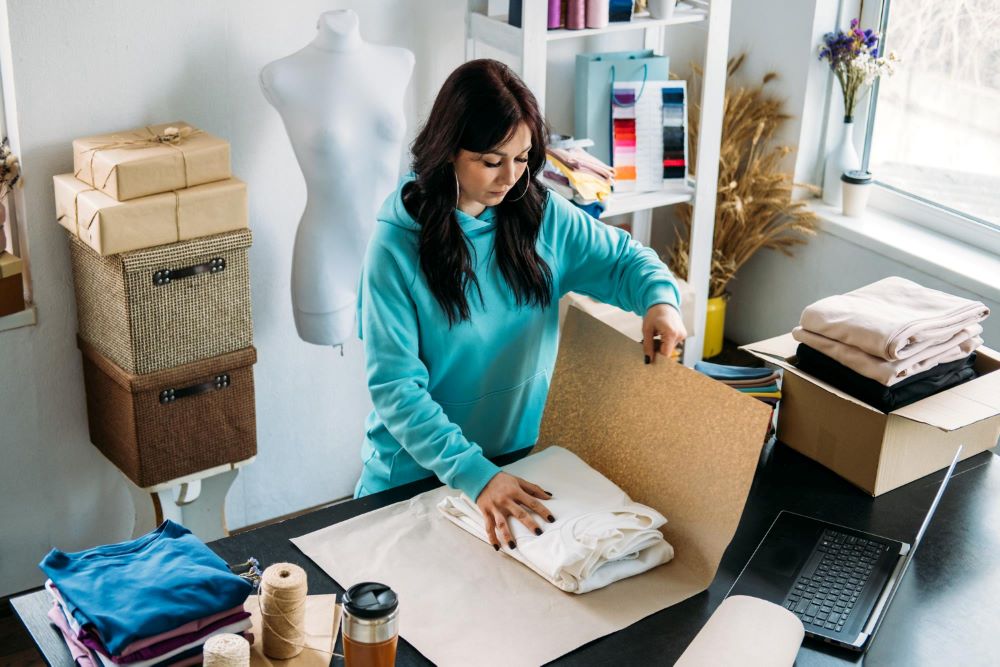The fashion and clothing business around the world is going through one of the most significant changes in its history. Market estimates say it will be worth $3.3 trillion by 2030. Because of this, brands, makers, and textile suppliers need to change quickly. Traditional sourcing strategies are being tested by factors like an uncertain economy, environmental concerns, and quickly changing customer habits. At the same time, digital innovations, calls for sustainability, and the need for more flexible supply chains open up a lot of new possibilities for people who are ready to change.
We look at the most important fashion buying trends for 2025 that will affect the clothing industry in this in-depth guide.
You Can Also Read This For More Related Information : Best Fabric Sourcing for Fashion Designers
A Look At The Future Of Fabric Sourcing

These changes are affecting fabric procurement and production for companies, from sustainability and local sourcing to digital innovation and consumer needs. This summary will look at how new technology, eco-friendly materials, and methods based on data are altering fashion. Let's look at what fabric sourcing means for the future and how it will affect the business world.
For More Related Information : Where Do Small, Medium and Large Businesses Source Their Fabric?
1. Changing Consumer Demands And Supply Chain Realities

In 2025, consumers are no longer just looking for trendy designs or the cheapest price tag. Shoppers are more informed, conscious, and demand transparency, ethical production, and sustainability from the brands they support.
-
Shift from Cost-Driven to Value-Driven: Over 70% of global brands, according to statistics of fashion industry, are planning to overhaul their sourcing models. These brands will focus more on fabric quality, ethical production, and digital innovation than ever before.
-
Proximity and Local Sourcing: Fabric suppliers USA and clothing material suppliers will become integral to sourcing strategies, as brands seek to secure their supply chains and boost sustainability by sourcing locally.
Impact: Brands will have to change how they source products to appeal to today's tech-savvy and eco-conscious customers. This will help us get along better with fabric wholesalers and textile suppliers in the area.
2. Sustainability As A Necessity

Sustainability is no longer a luxury; rather, it is an essential requirement for businesses. The fashion industry is responsible for significant textile waste—92 million tons produced annually. Consumers are pushing brands to integrate sustainability at every level of their supply chains, and this is especially relevant for fabric material suppliers and fabric suppliers wholesale.
Key Innovations in Sustainable Sourcing:
- Circular Fabrics & Eco-Friendly Textiles: Biodegradable, recycled, and upcycled materials are slowly but surely becoming must-haves in the fashion business.
- Bio-Based Innovations: Materials made from agricultural waste, hemp, and lab-grown fibers are gaining momentum.
-
Eco-Certifications: Certifications like GOTS and OEKO-TEX are becoming increasingly important for verifying sustainability claims.
Consumer Demand: Fashion Industry Statistics say that 62% of Gen Z buyers care about the environment. To meet this demand, brands are looking for sustainable fabric suppliers and eco-friendly fabrics.
3. Nearshoring And Regional Manufacturing

Because the world has been unstable lately, relying too much on faraway manufacturing hubs is risky. This is why many fashion brands are making nearshoring a strategic goal. Moving production closer to important areas not only lowers risks, but it also makes the supply chain more resilient.
Benefits of Nearshoring:
- Reduced Carbon Footprint: A large reduction in emissions caused by transportation can be achieved by shortening supply chains through the use of nearshoring.
- Faster Time-to-Market: Proximity to key markets ensures quicker deliveries, a critical factor for maintaining competitiveness in the fast-moving clothing market.
-
Improved Inventory Management: Local manufacturing helps brands gain better oversight and control over their production.
Key Sourcing Locations: Wholesale fabric manufacturers USA and fabric wholesalers in countries like Mexico, Turkey, and the U.S. are seeing a resurgence as brands aim to shorten supply chains and reduce dependency on distant suppliers.
4. Digital Sourcing Platforms And Virtual Showrooms

The way brands talk to textile suppliers and fabric wholesalers has changed since the rise of digital technologies. Traditional ways of sourcing, like trade shows and trips abroad, are being replaced or added to by digital platforms that let people work together from far away and make decisions more quickly.
Key Digital Trends:
-
Virtual Sampling: Now that fabric suppliers wholesale offer digital models, brands can look at fabrics from afar, which speeds up the design process.
-
AI Matching Tools: Advanced algorithms help match brands with the right fabric suppliers based on quality, price, and specific needs.
- For Transparency: Blockchain technology is used to track and confirm where fabrics come from. This makes sure that promises about being environmentally friendly are true.
Competitive Advantage: Fashion industry statistics indicate that brands embracing digital sourcing platforms will have a competitive edge, driving faster innovation and reducing supply chain inefficiencies.
5. Data-Driven Sourcing Decisions

Since there is so much data out there, fashion industry figures and data-driven insights are changing how people source clothes. Predictive analytics and real-time data are being used by brands more and more to make better choices, make the best use of their inventory, and cut costs.
Benefits of Data-Driven Sourcing:
- Predictive analytics: By using techniques to predict apparel demand, waste and overproduction can be minimized.
- Consumer insights: Information on the costs of fiber and the manufacturing capacities of suppliers of textile materials helps brands make well-informed judgments about what to buy.
- Smart Sourcing: Making use of data insights improves return on investment (ROI), reduces the amount of fabric that is wasted, and maximizes the efficiency of inventory management.
Outcome: As fabric material suppliers and clothing material suppliers become more data-savvy, brands will be able to make more efficient, cost-effective, and sustainable sourcing decisions.
6. Customization And On-Demand Production

People today want fashion experiences that are individual and one-of-a-kind. Brands are using on-demand production and small-batch collections more and more to meet the growing demand for unique, limited-edition things.
Impact on Fabric Sourcing:
- Flexible MOQs: Suppliers like fabric wholesalers will offer lower minimum order quantities to meet the demand for smaller, custom orders.
- Speed and Variety: It will be necessary for brands to collaborate with fabric suppliers wholesale who are able to achieve stringent deadlines because they will be concentrating on producing individualized products in a timely manner.
- Fabric Versatility: Materials that allow for diverse design options, finishes, and textures will be highly sought after.
Strategic Advantage: By embracing on-demand production, brands can cater to personalized consumer demands, reducing waste and enhancing customer loyalty.
7. The Rise Of Niche Fabrics

Mass production is being overtaken by demand for niche fabrics, especially in the premium and mid-market segments. Consumers are increasingly drawn to artisanal fabrics, handwoven textiles, and limited-edition designs.
Opportunities for Fabric Suppliers:
- Partner with Artisanal Communities: Textile providers have the opportunity to work together with local craftspeople to provide one-of-a-kind, environmentally friendly materials that have a depth of history.
- Offer Specialty Collections: Suppliers that offer exclusive, high-quality fabrics will meet the growing demand for distinctive designs.
- Educate Consumers: The fashion business must emphasize material origins more. To build brand loyalty, consumers must learn about fabric origins.
Trend: As consumer interest in niche fabrics grows, fabric suppliers USA that offer specialized, sustainable textiles will have a distinct competitive advantage.
8. Fabric Suppliers Driving Innovation

Today’s fabric suppliers are no longer just selling materials; they’re co-developing innovative textiles with brands. These fabric suppliers wholesale focus on sustainable, performance-driven textiles to meet the demands of the modern consumer.
Innovations in Fabric Sourcing:
- Smart Textiles: Fabrics embedded with technology such as temperature regulation and health-monitoring sensors.
- Performance Fabrics: Consumers are getting more and more interested in materials that are not just lightweight but also durable and high-performing.
-
Eco-Friendly Finishes: Non-toxic dyes and finishes are essential to reducing environmental impact.
Outlook: Fabric suppliers USA and fabric wholesalers who embrace these innovative materials will be well-positioned to lead the market.
9. Technology’s Role In Fashion Sourcing

From AI forecasting to automation, changes in buying and manufacturing are caused by technological progress. These technologies are not only making things more efficient, but they are also cutting down on waste and prices.
Improvements in technology:
- AI Forecasting: Tools that use AI to guess how much fabric will be needed help brands avoid making too much.
- 3D Design Tools: Brands can make digital prototypes that speed up development and reduce waste.
- Automation: Robotic sewing machines and procedures that AI runs make the production process more streamlined, which makes it more efficient.
Advantage: Brands and sellers of fabric materials that use these technologies will be able to stay ahead of the competition.
For More Related Information : Tips on Sourcing Fabric for your Clothing Brand
Conclusion: Navigating the Future of Fashion Sourcing

Sustainability, local sourcing, data-driven decisions, and digital innovation will change the way fashion is sourced in 2025. In a market that is becoming more competitive and concerned about the environment, brands that work with flexible fabric suppliers wholesale, accept nearshoring, and adopt new technologies will do very well. Fashion brands can meet the needs of a new generation of customers by making their supply lines more resilient, efficient, and ready for the future by focusing on these key trends.
Getting clothes in the future won't just be about price; it will also be about getting them faster, better, and with a purpose.
For More Related Information : Guide to Sourcing Fabrics from India for US Fashion Brands
Frequently Asked Questions
Question 1: Why Are U.S.-Based “Fabric Suppliers” Becoming Popular In 2025?
Answer: With increasing pressure for quick delivery and sustainability, fabric suppliers USA offer local solutions that reduce shipping times, emissions, and risk.
Question 2: What Technologies Are Most Impacting “Fabric Sourcing In 2025”?
Answer: Key technologies include blockchain (for traceability), AI (for demand forecasting), and 3D sampling (for rapid prototyping).
Question 3: How Can I Verify That A “Fabric Supplier” Meets Sustainability Standards?
Answer: Look for certifications such as GOTS, OEKO-TEX, and Fair Trade. Many platforms now list certified fabric wholesalers with traceable sourcing.
Question 4: What Are The Risks Of Relying On A Single Country For “Fabric Sourcing”?
Answer: It exposes businesses to tariffs, supply chain disruptions, and quality control issues. Multi-sourcing strategies across geographies are safer.
Question 5: Are Resale And Rental Models Actually Impacting Sourcing?
Answer: Yes, brands are sourcing more sustainable, repairable fabrics to support circular business models like rental and second-hand sales.
For More Related Information : Best Fabric Suppliers for Your Fashion Line: An Ultimate Sourcing Guide
We also happen to be a magnet for suggestions, and would love to catch yours….throw us yours on hello@fabriclore.com





Leave a comment
This site is protected by hCaptcha and the hCaptcha Privacy Policy and Terms of Service apply.